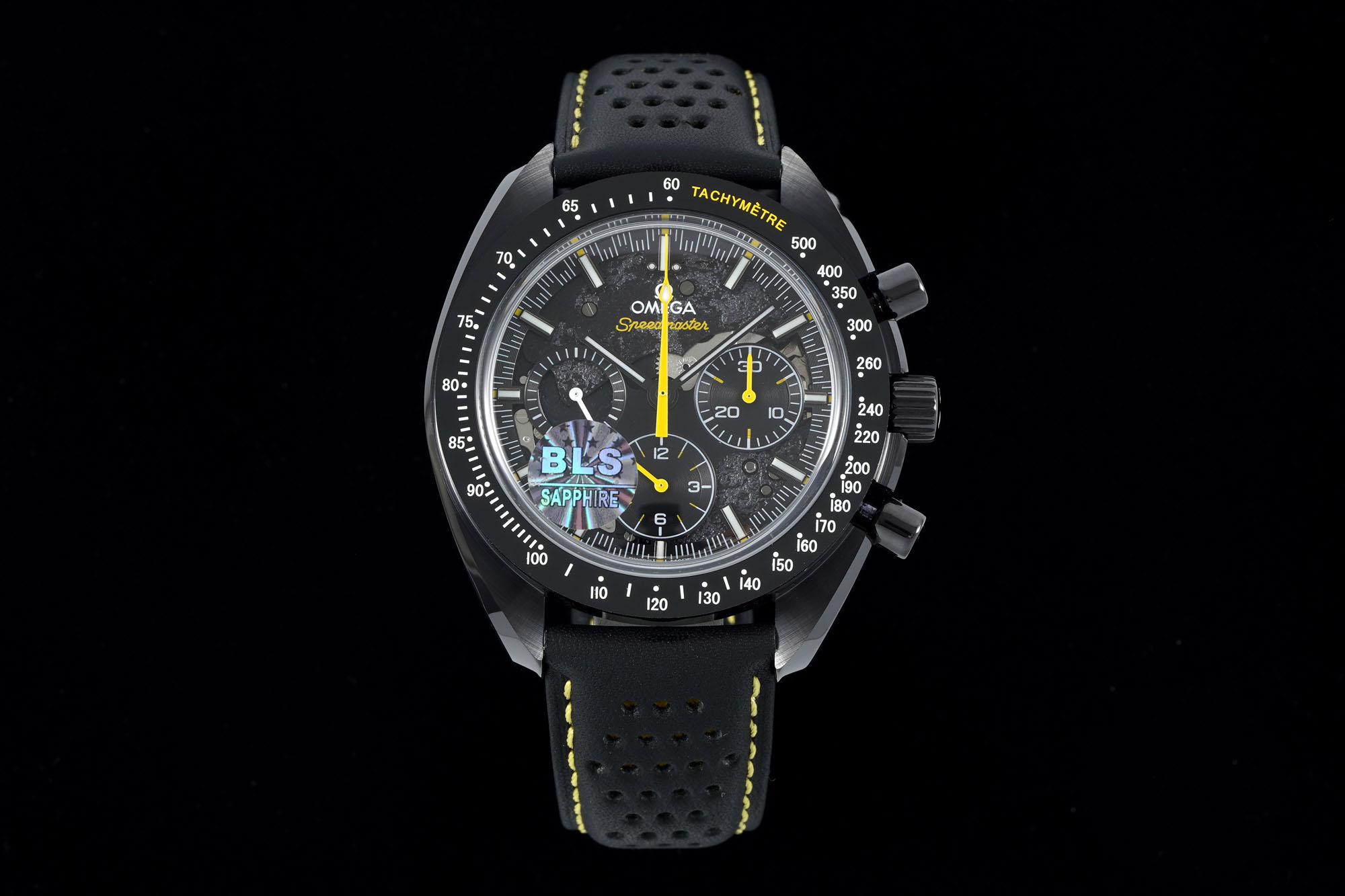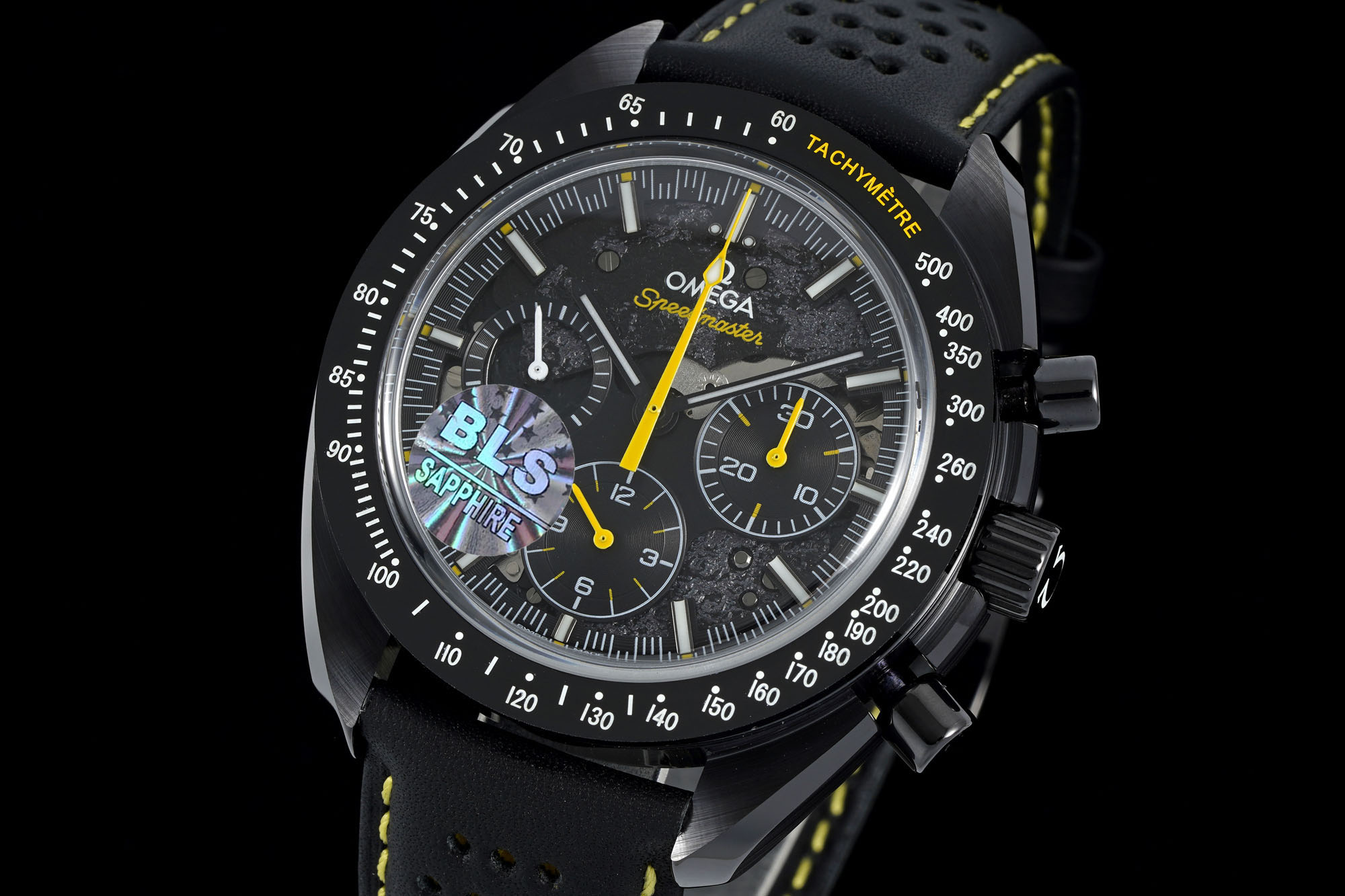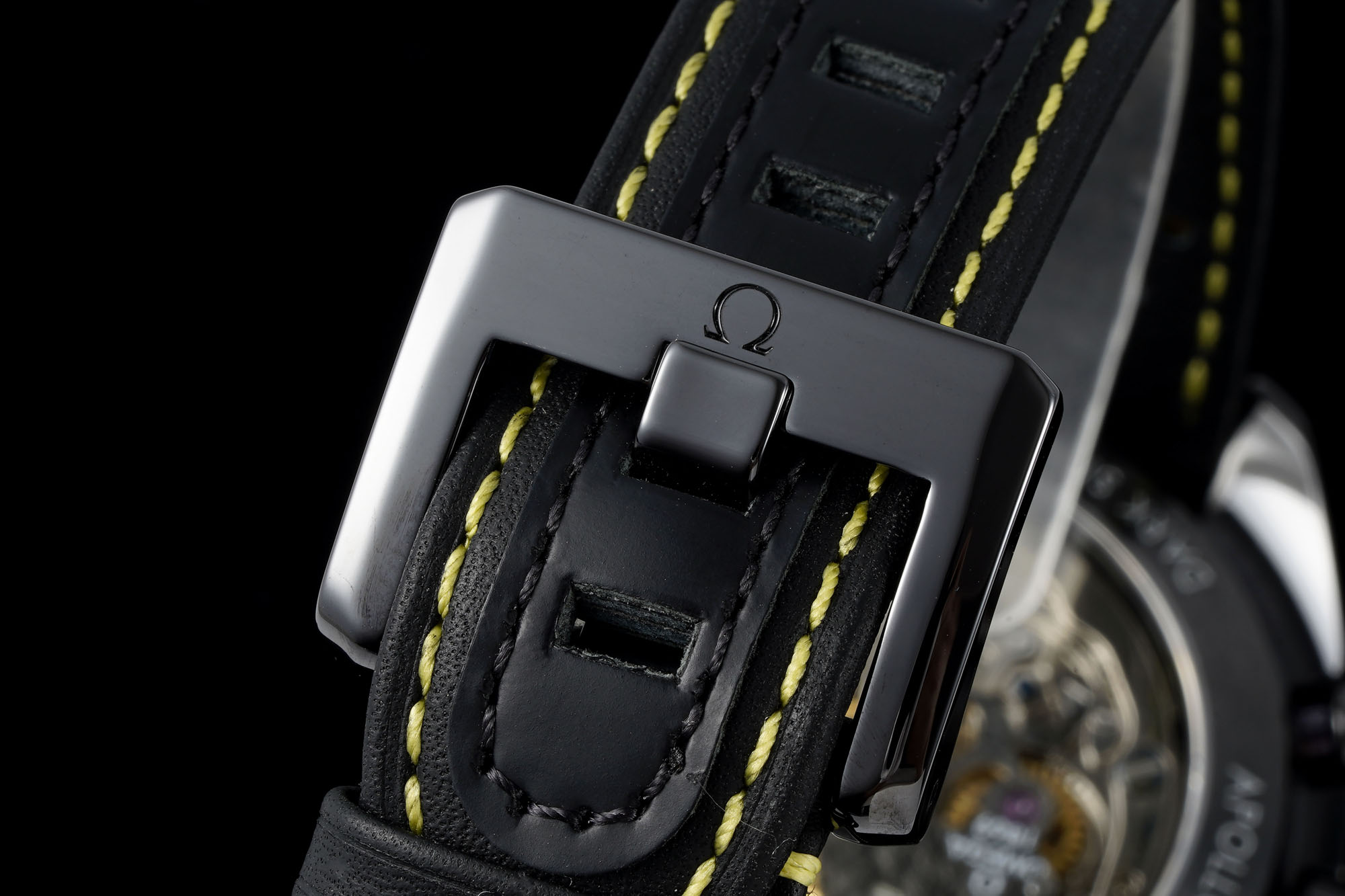The 2025 debut of Omega’s latest Speedmaster series, the ‘Dark Side of the Moon,’ marks a bold step in luxury watchmaking with its pioneering application of the ‘all-ceramic’ technology. Ceramics, an inorganic, non-metallic substance crafted through high-temperature firing, is gaining traction in the horological world due to its exceptional mechanical properties. This material not only appeals because of its striking and diverse color palette but also for its lightweight nature—ceramics are twice as light as steel—and its superior wear resistance, high scratch resistance, high biochemical inertness, hypoallergenic properties, and non-magnetic nature.
The new Speedmaster boasts a 44.25 mm ceramic case, housing a blackened movement that pays tribute to the watch’s historic role in the Apollo 8 mission. Employing laser ablation technology, the movement’s bridges depict a realistic image of the lunar surface, a homage to the Speedmaster’s significant contribution during the mission. From the black anodized aluminum openworked dial, the visible ‘near side’ of the moon can be seen, just as observers from Earth would see it. Conversely, the watch’s back reveals the ‘far side’ of the moon—an aspect visible only to astronauts, thus providing a unique visual narrative.
Complementing this masterpiece is a black perforated rubber strap with a striking yellow rubber lining at its core, demanding attention. The watch, fashioned entirely from black ceramic, features a central chronograph seconds hand coated in vibrant yellow lacquer, with a laser-engraved bright white enamel tachymeter scale adorning the bezel. The small seconds sub-dial hand crafted from Grade 5 titanium takes on the imaginative shape of the Saturn V rocket—a nod to the watch’s spacefaring legacy. This 3D design is brought to life through laser-turning technology and enhanced by techniques such as white lacquer coating, laser ablation, and laser blackening, resulting in a vivid multicolor effect.
From an ethical perspective, the use of ceramics not only enhances durability and luxury appeal but also aligns with sustainable practices by reducing the reliance on metal extraction. This choice, however, raises questions about the exclusivity factor. As ceramics become more prevalent, will the traditional allure of steel and precious metals in luxury watches face obsolescence?
In economic terms, Omega’s strategic use of ceramics represents an attempt to occupy a niche within the competitive luxury market, differentiating itself through innovation. According to industry data, the global market for ceramic materials in luxury watches is expected to grow significantly, driven by consumer preference for durable and lightweight alternatives. This trend suggests a shift in consumer values from mere status symbol to products that embody technological progress and practical benefits.
Psychologically, the appeal of owning a timepiece such as the ‘Dark Side of the Moon’ extends beyond its aesthetic and functional qualities. It also challenges the traditional concept of luxury, positioning it as a modern, forward-thinking choice. This perception may influence consumers to question the need to invest exorbitantly in high-end watches made from conventional materials when a ceramic piece can offer both innovation and prestige without the hefty price tag typically associated with metals.
The replica watch market also finds relevance in this context, as the desire for cutting-edge design and materials at a more accessible price point persists. Ceramics present a compelling alternative to both genuine luxury seekers and replica enthusiasts, underscoring the evolving dynamics of luxury consumption.
With this innovative ceramic watch, Omega not only cements its legacy in pioneering space age materials but also envisions a future where luxury embodies both tradition and technological evolution. Embracing ceramics signifies a new era in horology, one that defies convention and invites consumers to reevaluate what they consider valuable in their timepieces.












